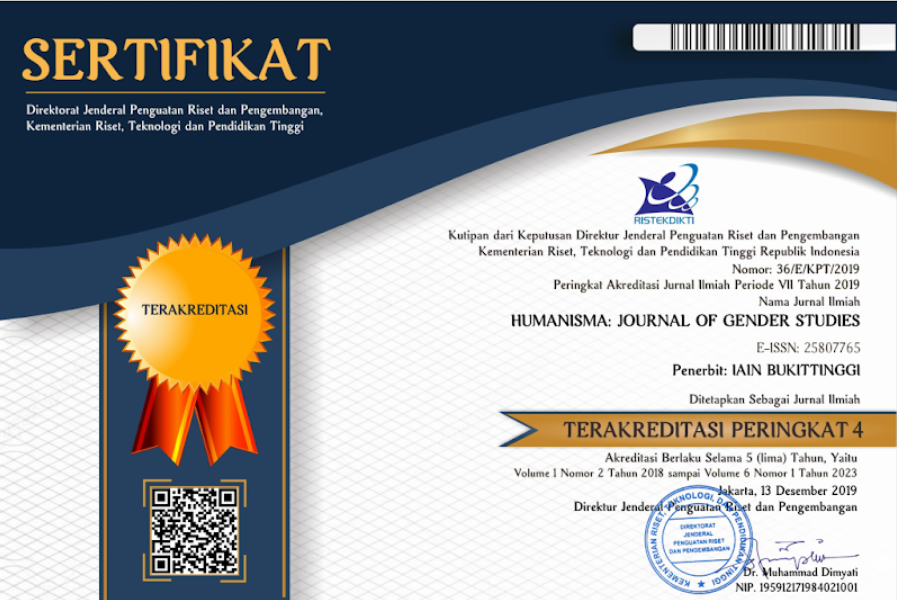BIAS GENDER DALAM BUKU AJAR AL-ARABIYAH LINNAASYIIN
DOI:
https://doi.org/10.30983/jh.v1i1.324Abstract
References
Adib Bisri, dan Munawir AF,(1999), Kamus Al Bisri, Surabaya: Pustaka Progesif
John M. Echols dan Hassan Shadily, (1983), Kamus Inggris Indonesia, Jakarta: Gramedia, cet XII
Mahmud Ismail Sini, Nasif Musthofa, Abdul Aziz Thohir Husein, (1983), Al-Arabiyah Linnasyiin, Arab Saudi: Mamlakah al-‘Arabiyah as-Su’udiyyah
Maulana Khusen, Bias Gender dalam buku pelajaran Bahasa Arab untuk tingkat Madrasah Tsanawiyah karya Darsono dan T.Ibrahim, Raushan: Journal Vol. 4 No. 2, Juli 2014
Mufidah, (2013), Psikologi Keluarga Islam Berwawasan Gender –edisi revisi–, Jakarta: UIN-Maliki Press
Nasharuddin Umar, (1999), Argumen Kesetaraan Gender Perspektif al- Qur’an, cet.1, Jakarta: Paramadina
Nur Rofiah, “Bahasa Arab sebagai Akar Bias Gender dalam Wacana Islamâ€, http://arabionline.blogspot.co.id/2012/02/bahasa-arab-sebagai-akar-bias-gender.html, diakses pada 29 Mei 2017
Tim Penyusun Pusat Pembinaan dan Pengembangan Bahasa Depdikbud. (1990), Kamus Bahasa Indonesia Kontemporer, Jakarta: Balai Pustaka
Widaningsih, L., tt, â€Relasi Gender dalam Keluarga: Internalisasi Nilai-Nilai Kesetaraan dalam Memperkuat Fungsi Keluargaâ€, dalam hlm. 1-7, http:www. file.upi.edu.Relasi_Gender-Lilis.pdf, diakses pada: 18 Desember 2016.
www.upi.edu/ai.php, diakses pada 2 Juni 2017
Downloads
Published
How to Cite
Issue
Section
Citation Check
License
Authors who publish with this journal agree to the following terms:
- Authors retain copyright and grant the journal right of first publication with the work simultaneously licensed under a Creative Commons Attribution-ShareAlike 4.0. that allows others to share the work with an acknowledgment of the work's authorship and initial publication in this journal.
- Authors are able to enter into separate, additional contractual arrangements for the non-exclusive distribution of the journal's published version of the work (e.g., post it to an institutional repository or publish it in a book), with an acknowledgment of its initial publication in this journal.
- Authors are permitted and encouraged to post their work online (e.g., in institutional repositories or on their website) prior to and during the submission process, as it can lead to productive exchanges, as well as earlier and greater citation of published work (See The Effect of Open Access).



